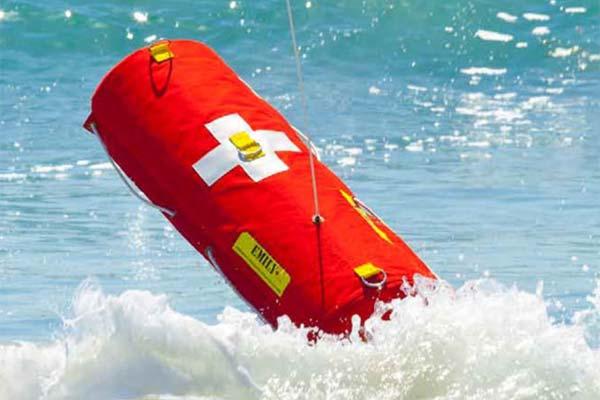The U.S. Navy funded research on the development of a fast-swimming "robot lifeguard" that saved Syrian refugees from drowning but has no immediate plans to acquire the EMILY system for the military.
"That's my mission in life, to win them over," Tony Mulligan, the inventor of the system and CEO and president of Arizona-based Hydronalix Inc., said Tuesday of his hopes to see EMILYs aboard U.S. Navy ships. "Other navies and coast guards around the world are using it."
The four-foot, 25-pound EMILYs, for Emergency Integrated Lifesaving Lanyard, were on display at the Navy booth this week at the Navy League's Sea Air Space exposition at National Harbor, and several of them were also zipping about in the Potomac outside the exhibition halls.
Fernando Boiteux, an assistant chief and 30-year veteran of the Los Angeles Fire Department, described EMILY as a "self-propelled life jacket" as he guided two of the maritime robots across a river inlet Monday with a hand-held remote.
Related Video:
Sea-Air-Space: USV E.M.I.L.Y
Boiteux said his department began experimenting with EMILYs in 2012 and now has four of them that they use off the beach for rescues. He said they were especially useful when rip tides take a group of swimmers away from shore, since the robots can get to them much quicker than a human swimmer.
Boiteux had no estimate for how many people may have been saved by EMILYs operating off the Los Angeles-area beaches, but guessed that it was "quite a few." The same systems used by a Texas A&M research team in coordination with the Greek coast guard also recently helped save an estimated 300 refugees who were in the water off the Greek island of Lesbos.
The Navy's Office of Naval Research, and the Navy's Small Business Innovation Research (SBIR) and Small Business Technology Transfer (STTR) programs began working with Mulligan in 2001 on the concept for a self-propelled flotation device and funded research on its development.
Mulligan said the finished product was 98% made in the U.S., including the composite hull made on the Tohono O'odham Indian reservation in Arizona. He said the EMILY goes for about $10,000 in the U.S. but the costs can balloon for overseas sales because of taxes.
The bright orange and yellow cylindrical devices are powered by an electric motor that shoots out a water jet stream for propulsion, operating much like a mini-jet ski. EMILYs are made of Kevlar and aircraft-grade composites and "can be thrown off a helicopter or bridge and then driven by remote control to whoever needs to be rescued," Mulligan said in a phone interview.
The latest versions of the devices are equipped with two-way communication radios, a video camera with live feed to smart phones and lighting for night rescues. The motors have also been upgraded to push through strong currents.
About eight people can grab on to EMILY at a time, and they can be reeled back to shore or a rescue boat by a 200-foot line that EMILY can carry to the rescue area.
Hydronalix has sold EMILYs to navies, coast guards and search-and-rescue units in South Korea, Indonesia, Singapore, Japan, Britain, France, Mongolia, Brazil, Mexico, Greece and the Hong Kong harbor police.
-- Richard Sisk can be reached at Richard.Sisk@Military.com.































